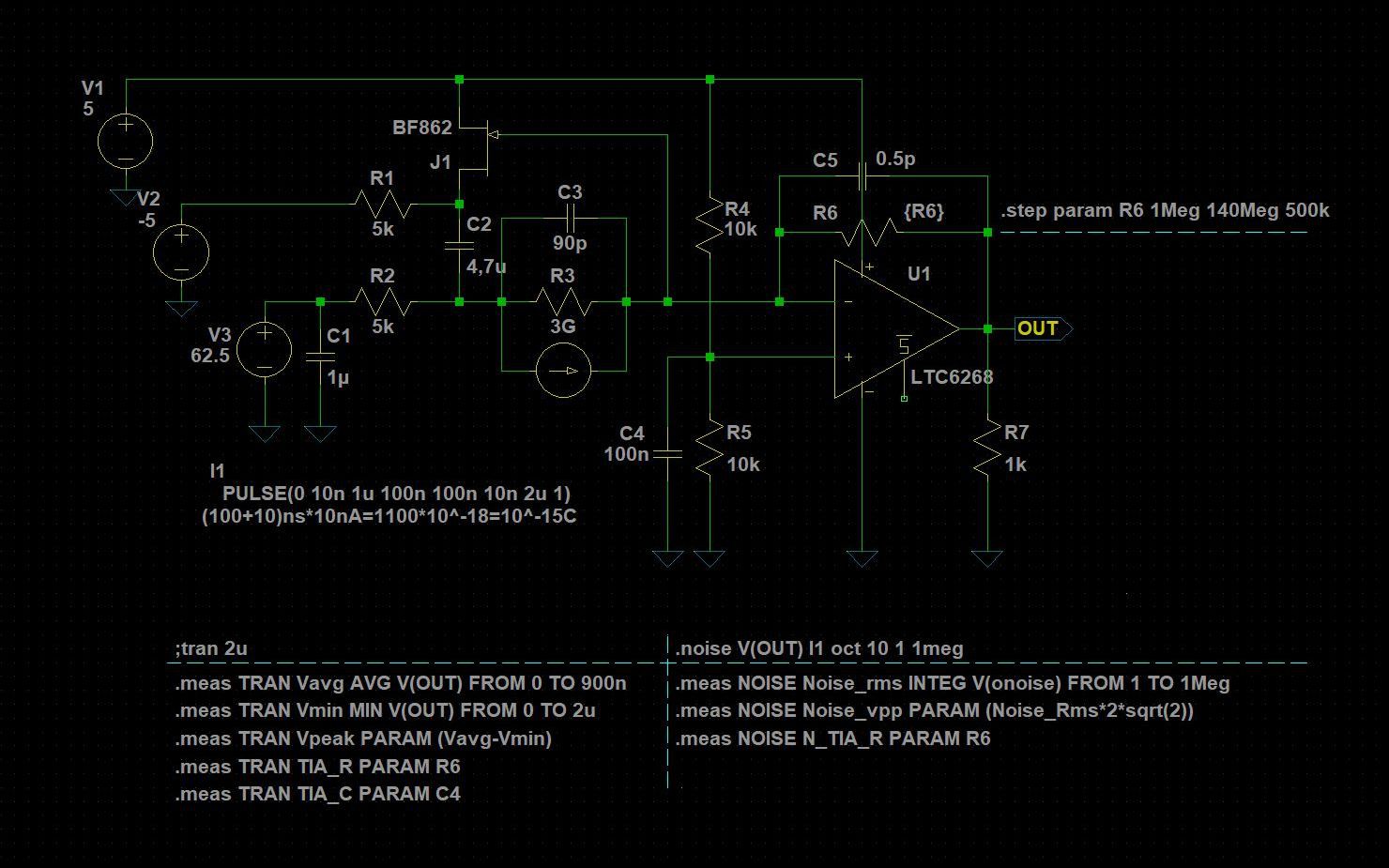Recently I have tried to simulate the transimpedance amplifier once more to optimize the components for the best singal to noise ratio. This proportion is mostly affected by the feedback resistance, which determines how large the output signal will be. The additional feedback capacitor shuld be kept at lowest value preventing the op amp from disastrous oscilations.

The pulse coming from the detector had an estimated length of about 300ns and carried charge of one femto Coulomb. The feedback resistance was stepped in two scopes one ranging from 1M-100M. The other one was more focused on the peaking that ocurred in the scope 10k-350k. For resistances greater than 140M the simulations didn’t provide any reliable or sensible results. Results of this analysis also varied with the noise integration range. For this case I have set it to be from 1Hz-1MHz.


Estimating results even in the simulations is really complicated as all the parameters are dependent on one another. This circuit needs to meet a few criteria:
- Huge amplification for the ultra low current pulses
- Highest possible SNR - Signal to noise ratio
- Wide bandwidth to amplifiy even the shortest events and measure high doses
This simulation does not include the thermal noise coming from the photodiode and the numerical analysis has its limitations. In the range of extremely large resistances or low currents it is unwise to relay only on them.
Even though I ran lots of simulations still the results varied depeding on the scope. Finally, I decide to design the board and work on the prototype to pick the optimal values. One part after another I will assembly the detector and gather the data that earlier I could only estimate without certainty.
The first examination will focus on the TIA - transimpedance amplifier . I intend to focus on the feedback resistor to see what results provide various resistors starting from 100k to 1G. I'm also curious about the noise from the photodiodes.
If you have any suggestions about the simulations I am open to any discussion as it feels a little bit as if I was walking in the dark. I wish I could find one and only optimal value for the TIA, but the whole thing seems to be floating. Maybe PSpice has some better numerical analysis or tools, but unfortunalety the LTspice models/libs are coded and availible only for LTspice.
Discussions
Become a Hackaday.io Member
Create an account to leave a comment. Already have an account? Log In.